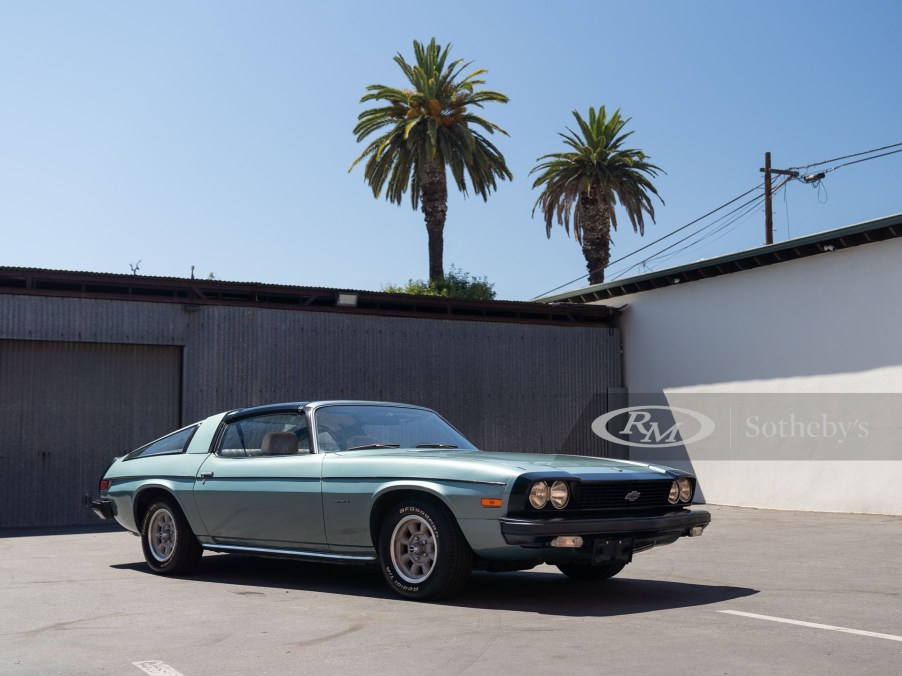
Weirdest Camaro Ever Made: 1976 Europo Hurst
In some views, you can see it and others you can’t. This was once a stock 1976 Chevy Camaro. But a lot has been changed. It was restyled by Frua, which was an Italian coachbuilder run by Pietro Frua. It was much like Italdesign or Pininfarina. Chevy commissioned him to slice up the second-generation Camaro and this is what Frua wrought. This looks like the weirdest Camaro ever made. It’s called the Europo Hurst.
The squared-up front end looks nothing like what it started as. The hooded dual headlights and wider grille were much more conventional than the stock Camaro fascia. The wheel openings and windshield remained stock, but then things change behind the T-tops.
The Europo top doesn’t taper in like the stock Camaro top does

The top behind the B-pillar takes on a look more like a Lamborghini Espada. The Camaro got the wrapping backlight a year before but still featured a top that transitioned into a trunk. Not so the 1976 Europo Hurst Camaro. The top extends further back to the tip of the trunk. It doesn’t taper in like the stock Camaro top does, either. So the rear of the car seems more massive.
The top combined with the squared-up front end took a lot of the organic features from the Camaro. This was done during the time the “folded paper” look was just coming into vogue. Think of the Volkswagen Rabbit. That’s the look popularized by Italdesign and seems like it was at least some of the inspiration for Europo.
The Europo’s rubber trim is unnecessary as the body crease does the same thing more elegantly

What is a bit annoying about these shots is that they were taken with the sun directly overhead. This causes that rubber strip running front-to-back below the beltline to look like some kind of undercut. The line ties the front to the back but it also is too noticeable from the cast shadow below it. It seems really unnecessary as the crease midway down the body does the same thing more elegantly. But being as pronounced as it is with these shots is bothersome.
Frua was a well-known designer having designed both the Maserati Quattroporte and 3500 GT. He was involved with a lot of European manufacturers not just in Italy. The Volvo P1800 was also a product of Frua’s studio. Frua worked right up to when he died in 1983.
Unique and with provenance it could go for $200,000 or even more

The reason Frua’s styling exercise has appeared is that it is being auctioned off. RM Sotheby’s will put it on the block this September at no reserve. Will it go for big money? It’s hard to say. It is a one-off from the Mitosinka collection. Unique and with provenance it could go for $200,000 to $300,000 or even more.
But let’s be honest. As respected as Frua was this is not an improvement on the original Camaro. Granted, this was the series with those nasty locomotive bumpers tacked onto the front and back. But the changes made to fix that don’t seem to be a better design. Especially the front looks like it came straight off of an existing car. Like it was just tacked onto it.
It will be interesting to see how much it goes for. Maybe seeing it in person will change some minds about the design. Would you pay big money to own it?




